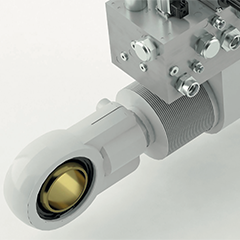The reliability of an offshore wind turbine and the resources required to maintain it can make up ~30% of the overall cost of energy, thus determining and understanding offshore wind turbine failure rates is vital for modelling and reducing O&M costs and in turn minimizing the levelized cost of energy (LCoE).
The reliability of an offshore wind turbine and the resources required to maintain it can make up ~30% of the overall cost of energy, thus determining and understanding offshore wind turbine failure rates is vital for modelling and reducing O&M costs and in turn minimizing the levelized cost of energy (LCoE).
One of the main optimization challenges that offshore wind faces is the cost of Operation and Maintenance activities, especially because of the difficulties associated with access for maintenance. The reliability of an offshore wind turbine and the resources required to maintain it can make up ~30% of the overall cost of energy, thus determining and understanding offshore wind turbine failure rates is vital for modelling and reducing O&M costs and in turn minimizing the levelized cost of energy (LCoE).
Even if the documentation on offshore failure rates is rather poor in the past, some recent analyses have already identified the most critical components for the failure rate of wind turbines.
‘Failure rate, repair time and unscheduled O&M cost analysis of offshore wind turbines’, an analysis of ~350 modern multi MW scale offshore wind turbines over a five year period reported in 2015 by Carroll et al.1, shows that as a subsystem, the hydraulic pitch system can be kept in working order by means of regular maintenance, with most repairs consisting of a change or top-up of oil, the cleaning of sludge accumulated on a sensor, the fixing of a leak or the replacement of a valve, accumulator or pump, as shown by Figure 2. However, the hydraulic system is responsible for blade pitch angle control and drivetrain and yaw system braking.
Therefore, a hydraulic system failure, although likely simple and cheap to repair, can critically impact turbine availability and loads if it remains undetected.



























